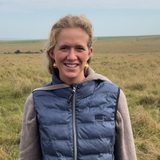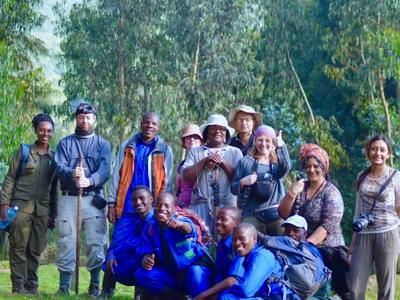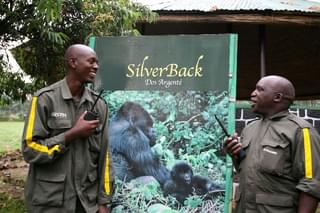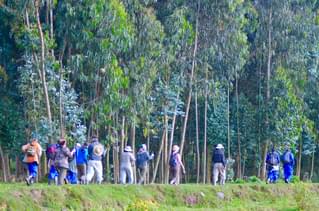Speak to a Rwanda expert today
and start planning your tailor-made holiday

Alistair

Ben


Can't decide where to go? Why not peruse some of our most popular destinations for inspiration then give us a call!

A diverse land brimming with superb safaris, pristine sandy beaches, towering snow-capped peaks and tropical underwater worlds is just waiting to welcome you

Australia offers vibrant cities, diverse landscapes, and iconic wonders like the Great Barrier Reef. New Zealand adds dramatic scenery, Maori culture, and relaxed charm. Together, they promise nature, adventure, culture, and warm hospitality.

If you're dreaming of an island getaway, look no further than the Caribbean with its gorgeous soft sand beaches and lively, diverse cultures.

Head to the amazing destination that is Central America, full of the knowledge of ancient civilizations, incredible mountains, and beautiful beaches.

Discover vibrant cultures, pristine beaches, and tantalizing flavours in the captivating travel haven that is East and Southeast Asia

Embark on a journey through the vibrant tapestry of India, Sri Lanka, and Bhutan—where ancient temples, lush tea plantations, and soaring Himalayan peaks promise unforgettable moments at every turn.

Picture yourself basking on sun-kissed beaches, sipping tropical cocktails beneath swaying palms —where crystal-clear lagoons and luxurious resorts cater to your every desire.

Experience world-class hospitality, mouthwatering cuisines, and the region’s deep-rooted cultural traditions for an unforgettable Middle East adventure.

Venture to the ends of the Earth and behold the icy majesty of polar landscapes. Discover pristine solitude, exhilarating expeditions, and breathtaking views that promise a memorable encounter with nature at its most dramatic

Journey into the heart of South America, where the rhythmic pulse of its vibrant cities meets the majesty of the Amazon rainforest and the timeless wonder of ancient civilizations.

The South Pacific is a paradise of turquoise waters, white-sand beaches, and vibrant island cultures. From adventure and natural beauty to pure relaxation, each island offers its own unique charm and welcome.

From the soaring plains of the Southwestern USA to the stunning landscapes of the expanses of Canada, visit some of the most impressive scenery in the world

If you are looking for a trip to knock iconic locations off your bucket list, check out our buck list recommendations

From the graceful stride of giraffes at sunrise to the echoing roars of lions beneath starlit skies, each of our safaris promises an unforgettable dance with nature.


Our family holidays are a perfect opportunity to create lasting memories, whether exploring new destinations or simply enjoying quality time together. From adventure-filled escapes to relaxing beach retreats, they offer a chance to reconnect and unwind away from daily routines.

Our luxury holidays offer the finest experiences, from exclusive resorts and private villas to tailor-made adventures with impeccable service.

For those seeking adventure beyond the usual tourist trails, our off-the-beaten-track trips take you to some of the world’s most remote and untouched destinations, where authentic cultural encounters and breathtaking landscapes await. Let us craft your unique journeys that few travellers ever experience.

For the ultimate beach escape, we offer luxury holidays to some of the world’s most stunning coastal destinations, from the white-sand shores of Antigua to the turquoise waters of Zanzibar.

For those who crave excitement and exploration, our adventure holidays take you to some of the world’s most thrilling destinations, whether trekking through Patagonia, summiting Mount Kenya, or kayaking past icebergs in Antarctica.

Interested in something a bit more focused? How about a horse-riding holiday through Argentina? Or a photography safari? Look through our Special Interest holiday selection for inspiration

Our wildlife holidays invite you to step into unique ecosystems and experience amazing animal encounters. Whether spotting majestic tigers in the jungles of India or marvelling at polar bears in the Arctic, each trip promises awe-inspiring moments steeped in the magic of nature.

Our small group tours offer the perfect balance of expert-guided exploration and personal experience, taking you to incredible destinations with like-minded travellers. Whether it's a wildlife safari in Botswana, a cultural journey through Vietnam, or a chef-led expedition through India, our carefully curated itineraries ensure an intimate, enriching, and hassle-free experience.

Sustainability travel is at the core of what we do and a guiding principle in every choice we make as a business. Let us help you make sustainable travel choices

Read about what we do to make a difference

One of the most important parts of our commitment to responsible travel is protecting our clients, and it is a part that we take extremely seriously.

Not sure what's best for which time of year? Check out our expert-written guides

Looking for some expertise on your destination? Have a look through our selection of guides and articles written by our destination experts

Looking for more inspiration? Read from our range of hundreds of articles from our travel specialists, local guides, and personal travel tales.

Our mission is to make every holiday special. We will do this whilst specifically aiming to minimise the environmental impact of our activity and maximise our opportunity to influence others to do the same.
Behind the scenes of Gorilla tracking in Rwanda's PNV

Savouring a freshly percolated coffee, I watched the morning mists slowly lifting off the valley below, with the magnificent Virunga volcanoes looming in the backdrop. It was time to meet my group over breakfast and ensure that they were fully prepared for today's activity - Gorilla tracking in Rwanda's Volcanoes National Park. Reminding everyone to dress in long trousers, bring rain jackets, wear thin layers and to bring their brimmed hat, cameras, lenses, video cameras, and money for souvenirs and tips, we gathered to depart to the park HQ.
A 15-minute drive down a rubble 'road' passing waving children and simple mud and mubati iron huts, had us at the main road. Half an hour later with volcano views throughout the journey, we arrived at the vehicle parking lot. While the participants enjoyed watching the Intore Dancers and consuming a complementary cup of tea provided by the park authorities, I finalised their paperwork and met with the rangers and guides to discuss the possible locations and nesting sites of the Gorilla groups.

My aim was to select a Gorilla group corresponding with the number of participants in my group. I agreed with Sarah, our head ranger for the day, that the participants would track the Agashya Gorilla family. The Agashya (which means 'special') family originally only had 13 members, at which time it was referred to as the '13 Group'. Subsequently however, they thrived, increasing to over 25 family members, but interestingly the group has only one Silverback. Mostly frequenting the foothills of Mt Sabyinyo and Mt Gahinga, the Agashya Gorilla family is considered as one of the easier gorilla groups to track for most visitors. However, when they do move up to higher elevations, tracking them can mean more effort is required.
It was Sarah’s turn to impart her knowledge to the rest of the group. She talked about the background of the Agashya Gorilla family, describing each individual Gorilla, and pointing out their unique individual characteristics and even their personality traits. She went through the park rules and regulations; the do’s and the don’ts. Before long, it was time to head off - but not before a final check to see who needed walking poles, and who wanted porters to carry their day-packs. Porters are invariably men who had previously been poachers in the forests and who used the bushmeat to feed their families, or, to sell in order to earn money for food, medical bills, or school fees for their children or for extended family members. By enlisting the services of a porter, guests decrease the load they have to carry while tracking Gorillas. Additionally, they help the resident communities to earn income.

A final farewell to my group and off they went into the Virungas for their golden hour among the Mountain gorillas, accompanied by Sarah and a team of trackers and porters. They were in for an awe-inspiring and absolutely unforgettable experience.
While my charges enjoyed what is undeniably one of the most impressive wildlife experiences to be had anywhere on Earth, I set about touching base with management of the carefully selected properties we use for our guests. Its essential to check that health and safety guidelines are being adhered to and I thoroughly enjoy building relationships with our partners in host countries.
Wondering when to visit? Take a look at this guide on the best time to visit Rwanda.
Looking for some more inspiration? Take a look at our best safari holidays ideas, our favourite family safaris, our big five safari guide or our top African safari honeymoon suggestions.
and start planning your tailor-made holiday



Get travel tips directly to your inbox every week
Give us a call on 0203 111 1315 or fill in the form below and we’ll be in touch.


